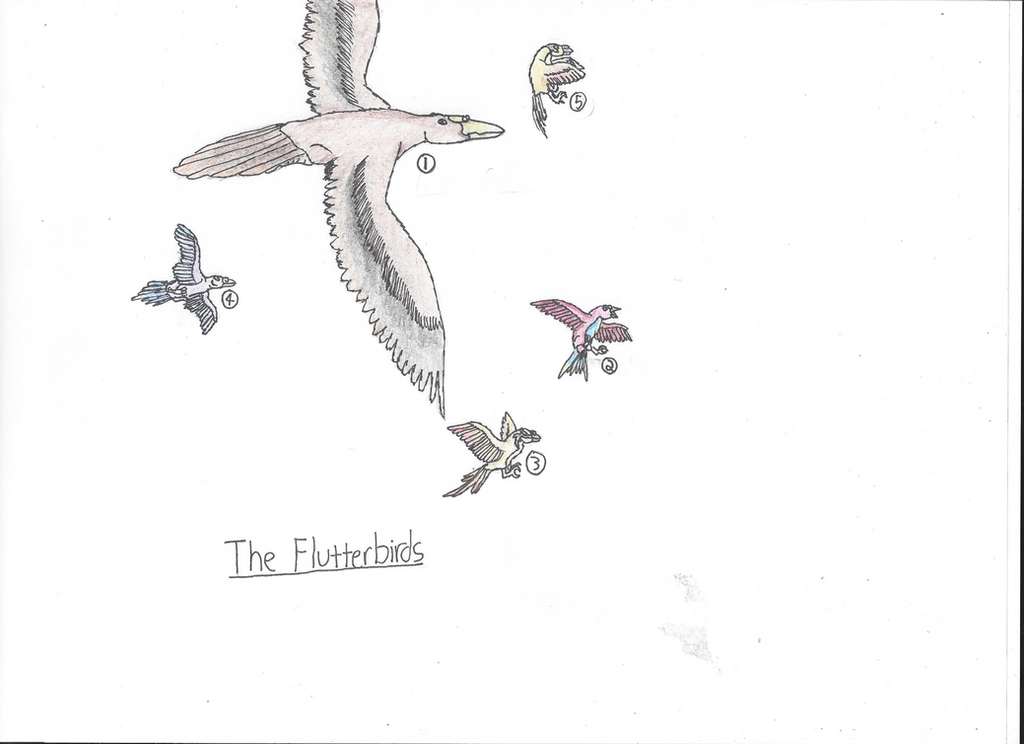HOME | DD
 awesomeelephant — The Flutterbirds
awesomeelephant — The Flutterbirds

#futureiswild #flutterbirds #speculativeevolution
Published: 2017-09-24 22:26:56 +0000 UTC; Views: 1838; Favourites: 21; Downloads: 0
Redirect to original
Description
1. Antarctic Cruiser - The largest of all the Flutterbirds, the Antarctic Cruiser lives an interesting lifestyle. It is mainly frugivorous but will go the daring route and eat many of the large arthropods inhabiting the forest.2. Warbling - The Warbling is an interesting Flutterbird because despite its flashy, outer appearance, it only eats seeds and small insects. Nothing toe extreme.
3. Spitfire Bird - Without a doubt THE most dangerous Flutterbird. It gets noxious chemical from male and female flowers from a specific species of tree. When it feels threatened, it mixes these two chemicals together and sprays a nasty acid out of its nostrils.
4. Roachcutter - One of the more agile Flutterbirds, Roachcutters are notoriously difficult to catch. Even the most experienced Falconfly will have trouble killing this bird.
5. False Spitfire Bird - A wonderful example of mimicry. Although not exactly the same color and pattern as the real Spitfire Bird, it still is good enough to fool predators.
Related content
Comments: 13

About the same as the Wandering Albatross, 12 ft, maybe a little bigger
👍: 0 ⏩: 1

What does it eat?
👍: 0 ⏩: 1

I’d like to think of it as an opportunistic omnivore. Stuff like fruit or any of the large arthropods that inhabit its range
👍: 0 ⏩: 1

Which begs the question--how did those large arthropods manage to evolve if there were still birds that could eat them?
👍: 0 ⏩: 1

If you’re referring to the Falcon Fly, I doubt that even the Antarctic Cruiser would want to snack on something that aggressive and venomous but wasps can’t be the only ones that were affected by the spike in oxygen so stuff like cockroaches and forest grasshoppers might be more to their liking. I’m sorry I probably should have cleared that up
👍: 0 ⏩: 1

And how does a bird with such a big wingspan hunt for bugs in a dense forest?
👍: 0 ⏩: 1

1. I was thinking along the lines of fruit bag for it’s design, 2. It does not actively hunt insects because as I stated it is opportunistic, and 3. Why are you even here? Are you just trying to point out as many flaws as you can??
👍: 0 ⏩: 2

No. As a matter of fact, it’s my favorite concept here!
👍: 0 ⏩: 1

Oh I'm sorry I freaked out! I've had way too many self absorbed people just want to rant on and on about how they're so much smarter than me or whatever and I've just had enough. I'm sorry again!
👍: 0 ⏩: 0

I meant bat whoops but my point remains the same
👍: 0 ⏩: 1

I get it now. Thanks!
That said, as a large opportunistic bird that mostly eats fruit but occasionally hunts animal, it also kind of reminds me of a hornbill.
👍: 0 ⏩: 0

Not bad, not bad at all! And I've come up with a few ancestors for when we reach the Antarctic Prairies.
👍: 0 ⏩: 0


























